Days 12 and 13, Tuesday/Wednesday: Salt Lake City
Clay visits Salt Lake City to talk with Scott Baxter a passionate advocate and student of the Great Salt Lake. Not long ago, Scott and a colleague circumnavigated the 180-mile lake in handmade kayaks, perhaps the first two to make such a journey. Scott shares his long love affair with the lake and concerns for its future. This dispatch is the 12th in a series from Clay chronicling his recent journey with two compatriots following the Colorado River and neighboring region exploring the state of water, or the absence of it, in the West.
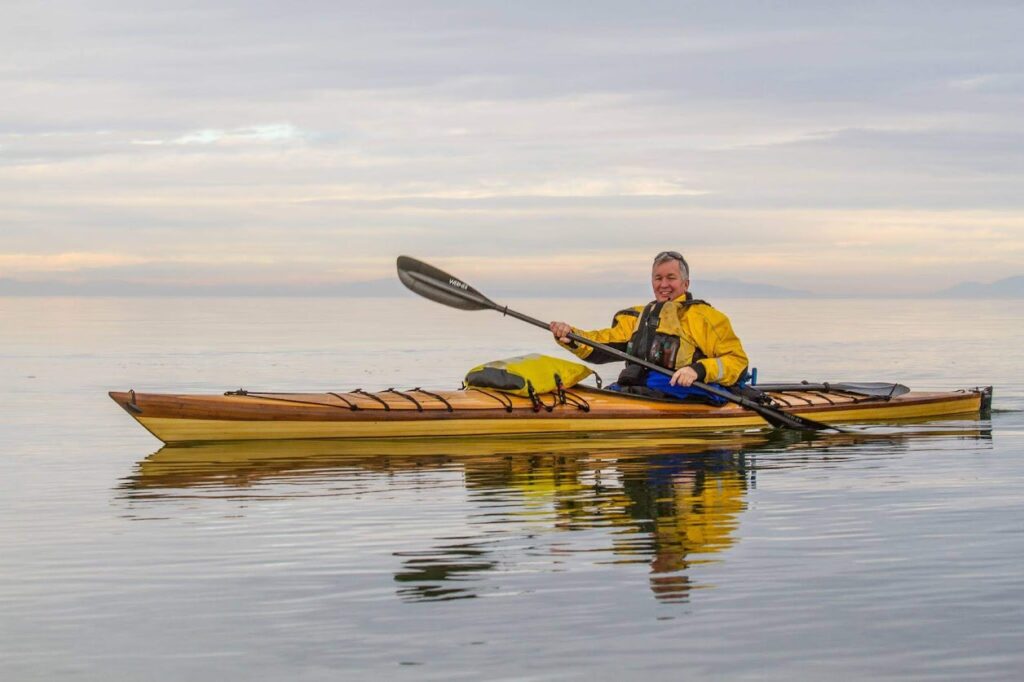
We spent the morning interviewing Scott Baxter about the death of the Great Salt Lake. Baxter is one of Great Salt Lake’s greatest friends — and yet he comes at the lake not as the head of a foundation or an advocacy group. He is technically retired from a life of international business, consulting, and project management. He is extremely well informed about water issues in Utah and it is clear that he loves Great Salt Lake deeply and in a very personal way.
He believes the lake may die. What we learned was that the lake could die well before it dries up entirely. The delicate ecosystem of brine shrimp and brine flies and tens of millions of migratory birds that come to feed on this rich source of protein is already severely compromised.
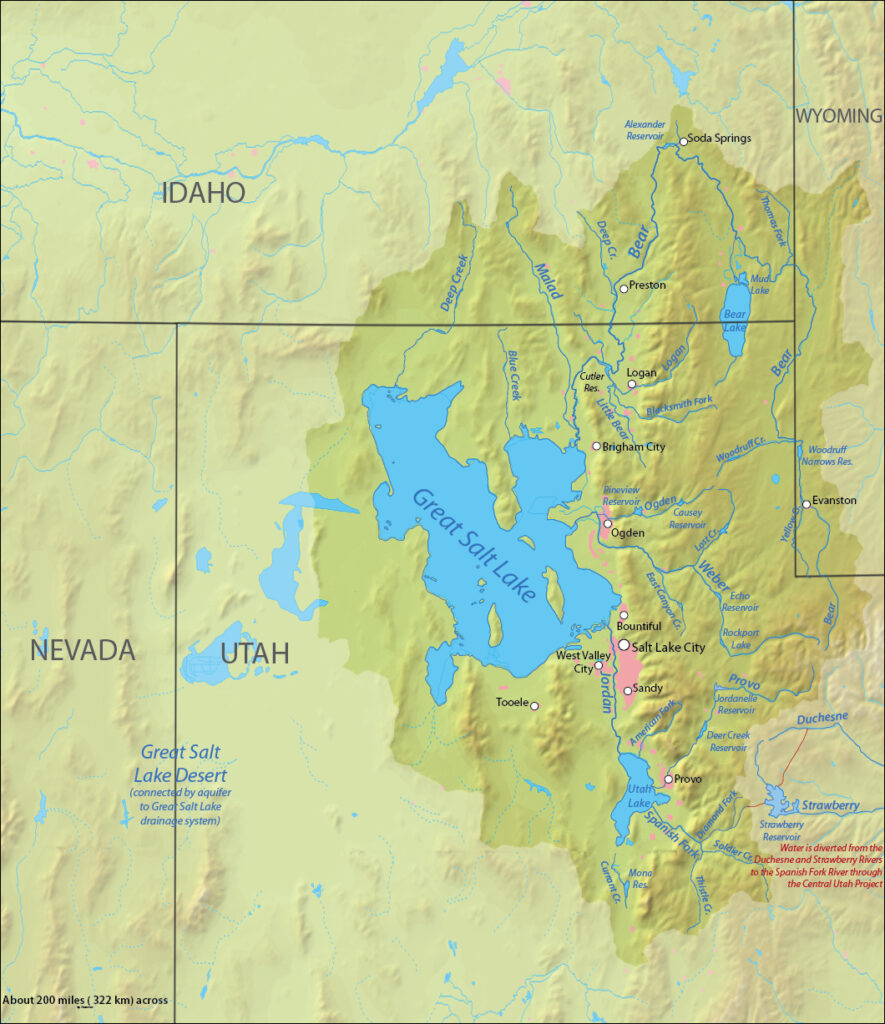
Great Salt Lake is a remnant arm of the gigantic ancient Lake Bonneville that once covered about a third of today’s Utah. Its cousins in the Great Basin — Pyramid Lake, Walker Lake, and Mono Lake — are all terminal lakes — water comes in with all that it carries, no water runs out, and evaporation increases the mineral density over time. Think of the Dead Sea in Israel. When Great Salt Lake is at its normal fill, it is approximately 75 miles in length and 35 in width. These days it is down 11 feet and, if it were not for this year’s exceptionally wet winter in the West, its obituary would be in sight.
Scott believes global climate change is a significant factor in the shrinking of the lake, but not the factor. “The biggest factor is the water we take for irrigation,” he said, not from the lake itself, but from “every river that goes into the lake: Bear River, Weber River, the Provo and Jordan Rivers.” Some water is diverted for municipal use on the Wasatch front, but almost 80% is used for irrigation.
The Church of Jesus Christ of Latter Day Saints recently determined to devote 20,000 acre-feet of water per annum to attempt to stabilize and refresh the lake. Although Scott said that he regarded this as a modest contribution that cannot itself save Great Salt Lake, it was a great start, and the stature of the LDS Church in Utah will not only lead to other water returns but will convince thousands of Utah residents of the seriousness of the crisis.
I asked him if he agreed that most Americans, even most citizens of Utah, take Great Salt Lake for granted and don’t regard its diminution as particularly important. He agreed. Plenty of people he knows just shrug when they hear about the lake’s plight. He said the lake has been a dumping ground for a range of toxins, tailings, and sewage.
Circumnavigating the Great Salt Lake in Handmade Kayaks
A couple of years ago, Baxter decided to circumnavigate the lake in one of his exquisite handmade kayaks, “before it was too late.” He convinced his daughter’s boyfriend, Matt Kahabka, to join him in what would be a difficult and possibly dangerous adventure. His story is fascinating. During our interview, when Scott talked about the collapsing ecosystem along the lake’s 180-mile circumference, he choked up. “The Great Salt Lake is somewhat of a spiritual experience for me. When I paddle on the lake, and experience the vast emptiness that’s out there, it gives me a chance to clear out my mind and to start focusing on things that maybe matter more in life than things we focus on every day.” Scott and Matt bonded deeply in their circumnavigation adventure. Scott reckons they are the only two people ever to make the journey.
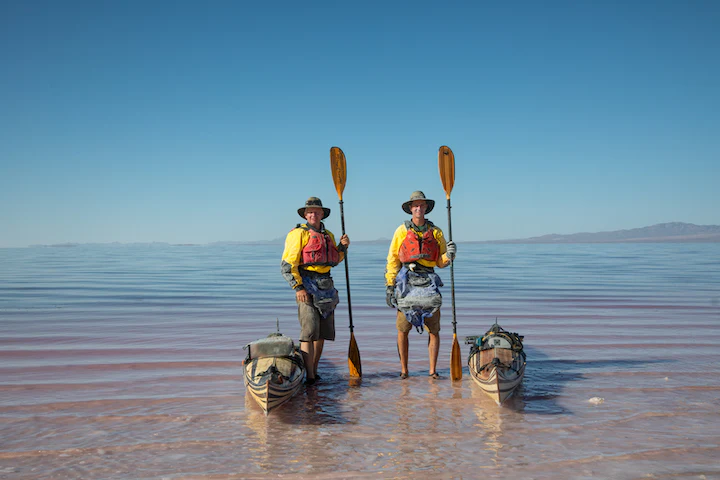
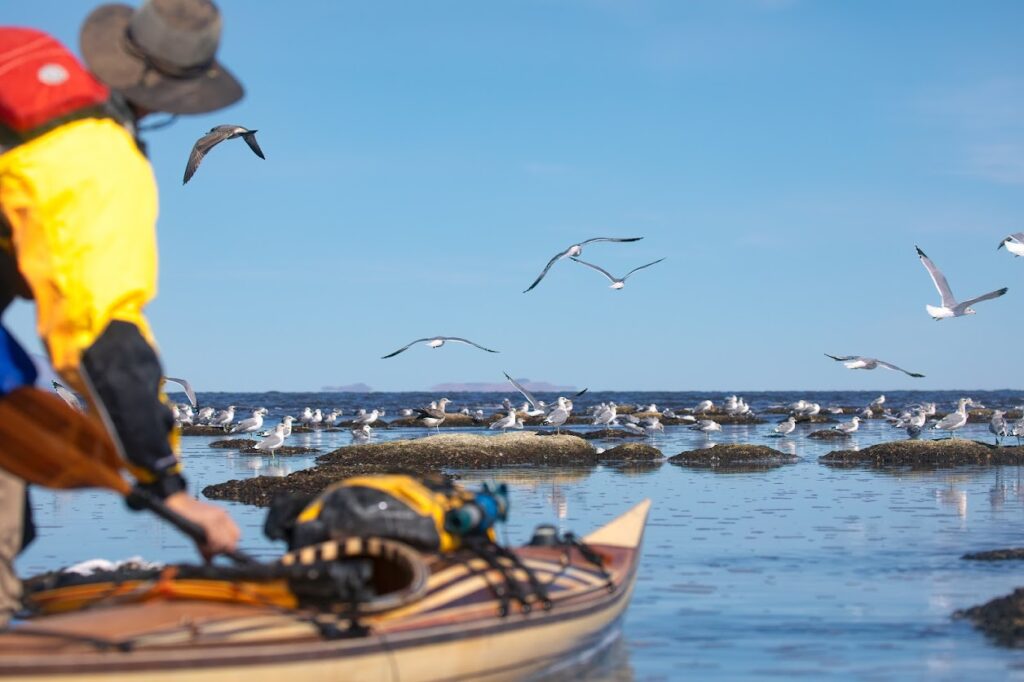
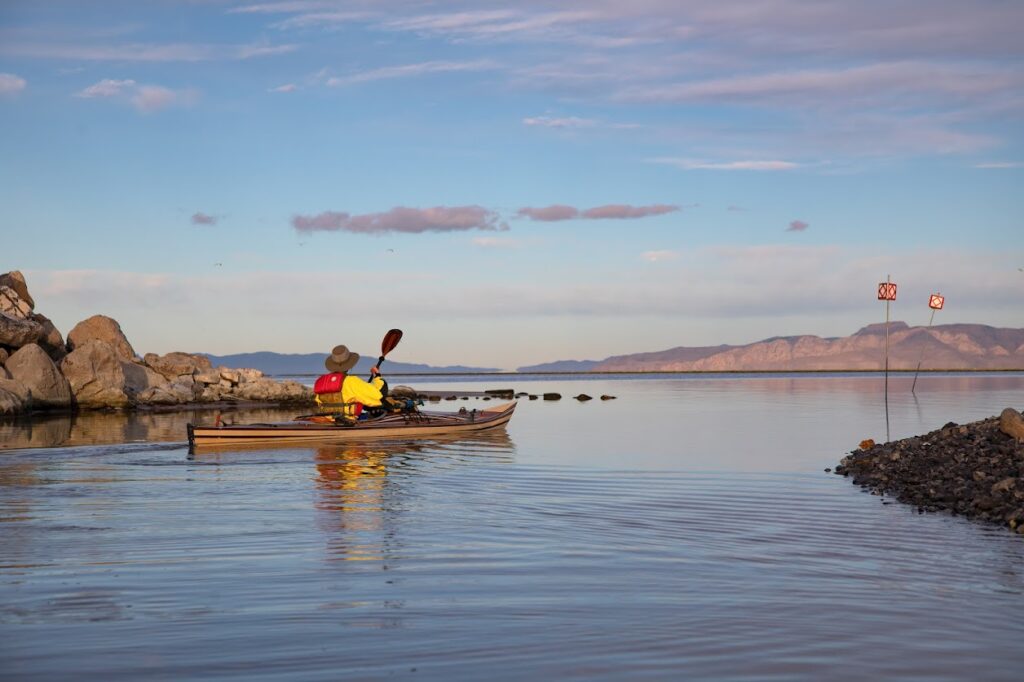

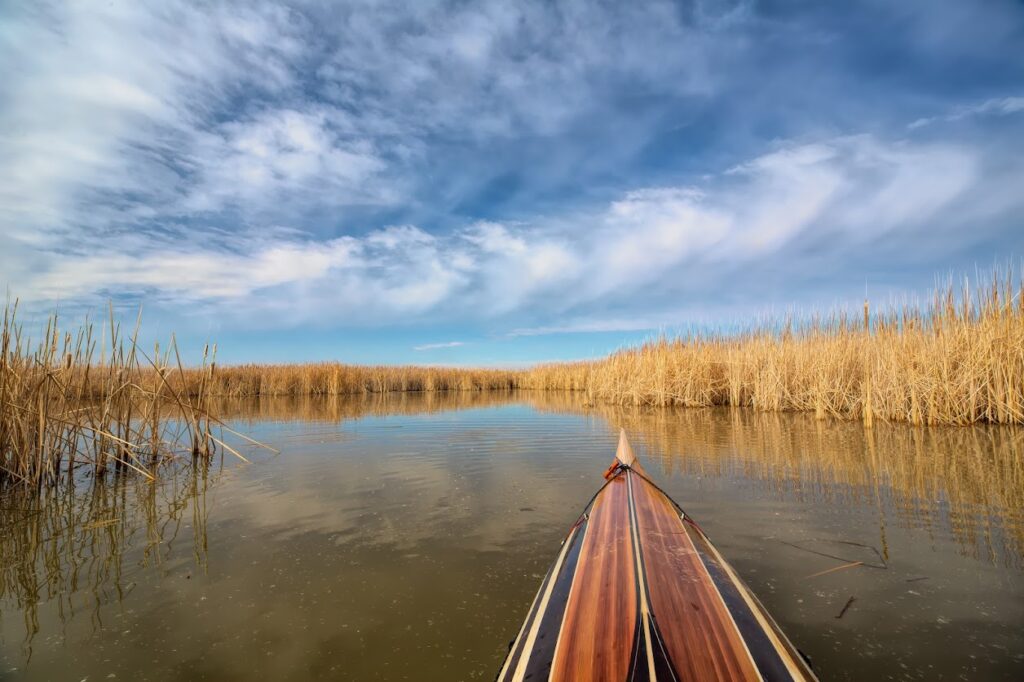
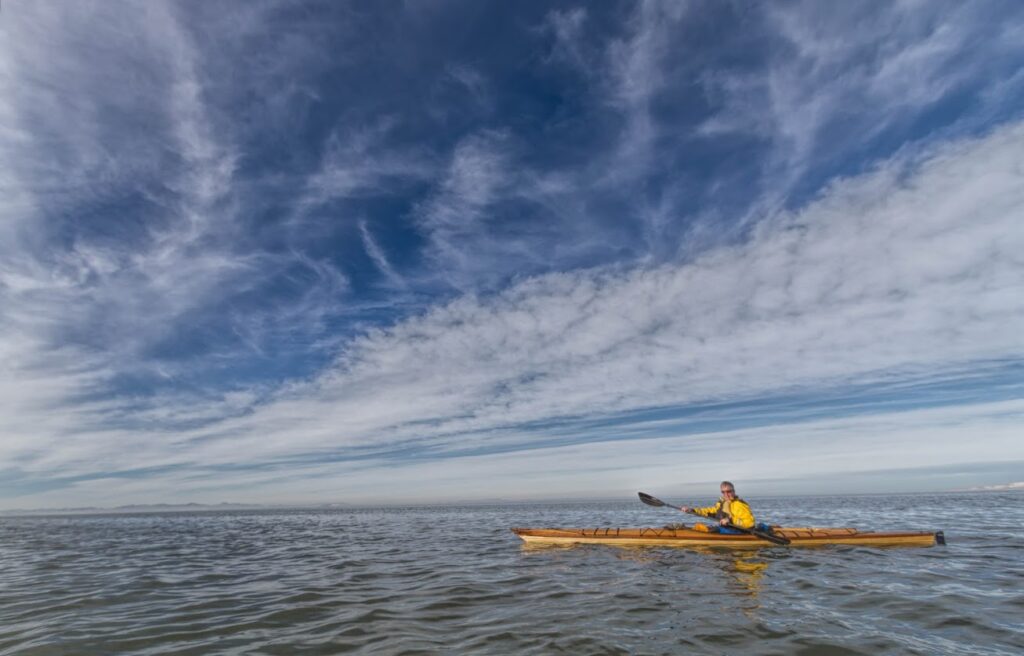
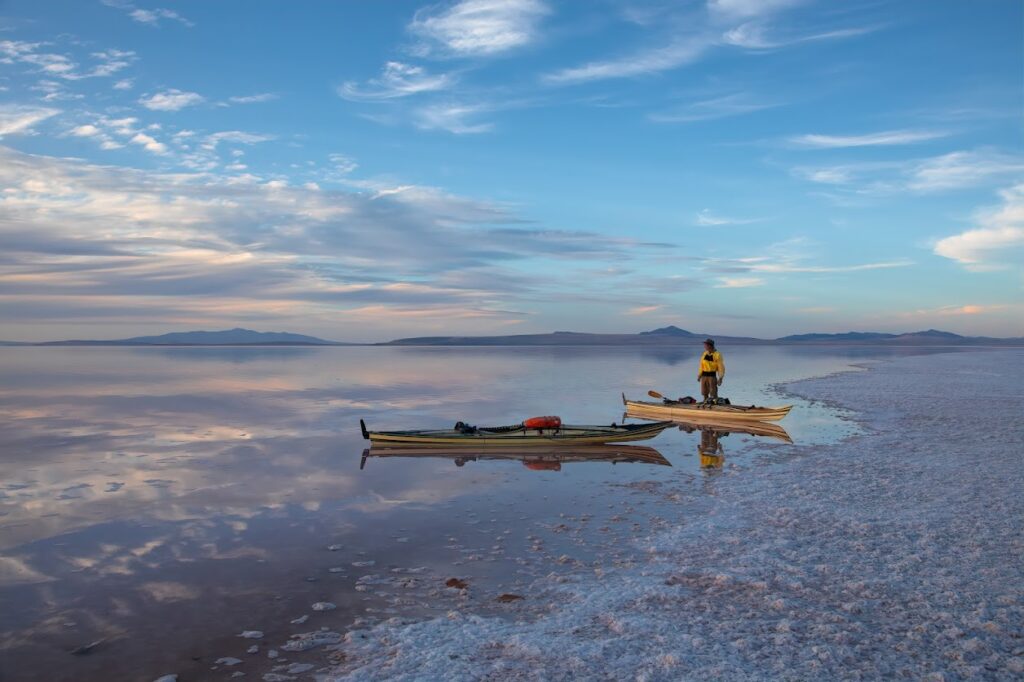
Photographs of Scott and Matt’s kayak circumnavigation of the Great Salt Lake. (Images courtesy of Scott Baxter)
I asked him if he would grieve if the lake dies. “I will grieve the lake and the relationship I had. But more than that, I will grieve … it’s one more loss where as a society, we haven’t learned anything. I think that’s what I will grieve the most.”
As we wrapped up the interview and Scott gathered up his things to drive home, I so wanted to beg for an opportunity to do some kayaking with him, on Great Salt Lake, in one of his exquisite wooden kayaks. Maybe that day will come. It’s clear that the lake is Scott Baxter’s Walden Pond. He knows it as well as anyone alive. He’s writing a book about it. The things about it that repel some others are manna to him.
I know we will keep in touch.
Day 13, Wednesday; Delta Airlines Salt Lake City to Minneapolis; Minneapolis to Bismarck.
The following day, it was time for Dennis and me to say goodbye and head in different directions toward our respective homes. We talked for several hours at the hotel, attempting to synthesize the last two weeks and this first chapter in our Water in the West expedition. And we talked about future Listening to America initiatives, particularly our plans for an Edward S. Curtis Elders Project. Around 11 a.m., the snow and ice on the roads clear, Dennis drove home to southern Utah. I made my way by trolley to Salt Lake International Airport.
Editor’s Note: You can track Clay’s dispatches on this Colorado River Journey by following the links from his route and itinerary below. You can also keep up with all LTA’s dispatches, essays, photos, and podcasts on this topic through the tab “Water in the West.” This is one of many ongoing road trips at the heart of Listening to America. Our mission is to “light out for the territories,” traveling less visited byways and taking time to see this immense, extraordinary country with fresh eyes while listening to the many voices of America’s past, present, and future.
Water in the West — Routes and Itinerary
- Introduction: A Colorado River Journey, The Trek Begins.
- Day One, Friday: I-70 Vail to Green River; Utah 24 to Torrey; Utah 12 to Boulder, Utah.
- Day Two, Saturday: Boulder, Utah.
- Day Three, Sunday: Utah 12 to Torrey; Utah 24 to Hanksville; Utah 95 to Natural Bridges National Monument; Utah 261 to Mexican Hat; U.S. 163 to Bluff; Utah 162 to Aneth; Indian Route 5068/Arizona County Road G to Cortez.
- Day Four, Monday: Crow Canyon Archaeological Center, Cortez, Colorado.
- Day Five, Tuesday: Colorado 160/491 to Chimney Rock; Colorado 160 to Teec Nos Pos; Colorado 160 to Mexican Water; U.S. 191 Tsaile; Arizona 64 to Chinle.
- Day Six, Wednesday: Canyon de Chelly; U.S. 191 to Burnside; Arizona 264 to Second Mesa.
- Day Seven, Thursday: Hopi Cultural Center; Arizona 264 to Tuba City; U.S. 160 to U.S. 89; U.S. 89 to Bitter Springs; U.S. 89A to Marble Canyon.
- Day Eight, Friday: U.S. 89A to Bitter Springs; U.S. 89 to Page, Arizona.
- Day Nine, Saturday: Lake Powell; U.S. 89 to Kanab.
- Days 10 & 11, Sunday/Monday: U.S. 89 to Utah 20; Utah 20 to I-15; I-15 to Salt Lake City.
- Days 12 & 13, Tuesday/Wednesday: Salt Lake City.
- Reflections on A Colorado River Journey.
